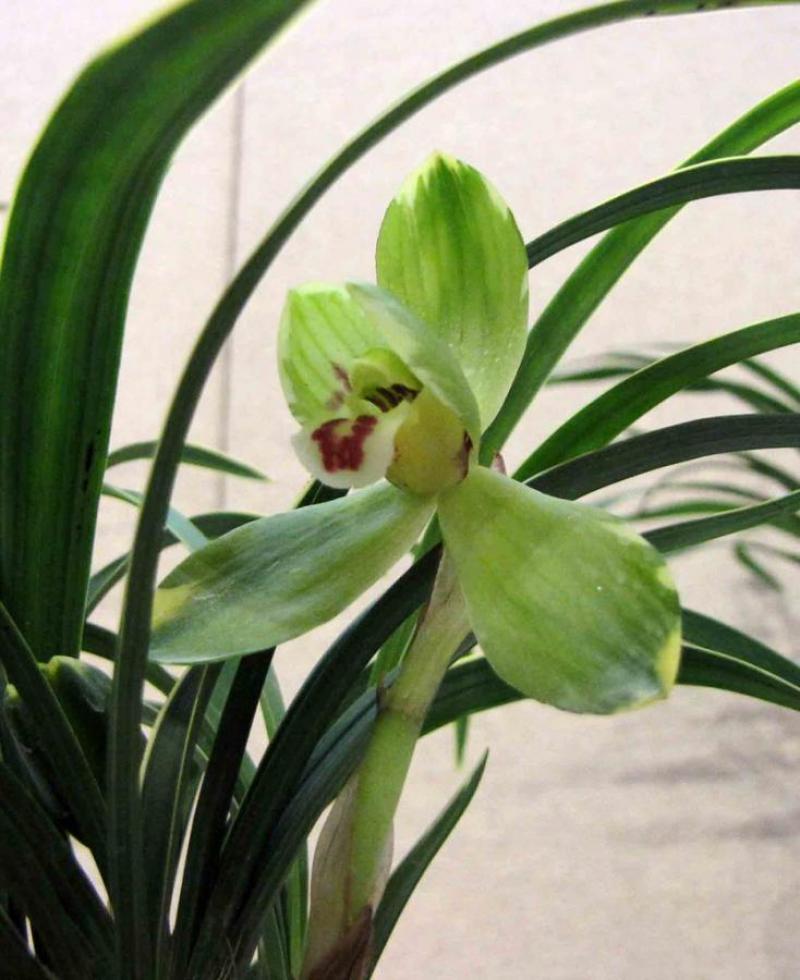Cymbidium goeringii
Also known as: Goering's Cymbidium or Cymbidium goeringii h.f. album Cymbidium chuenlan Cymbidium uniflorum Cymbidium pseudovirens Cymbidium yunnanense Cymbidium tentyozanense Cymbidium goeringii h.v. linfan Cymbidium virescens h.v. tohgenko Cymbidium forrestii h.v. daifuhki Cymbidium virescens h.v. nanki Cymbidium goeringii h.v. tortispalum Cymbidium forrestii h.v. sobai Cymbidium goeringii var. mackinnonii Cymbidium mackinnonii Cymbidium virens Cymbidium virescens Cymbidium forrestii Cymbidium goeringii h.v. goeringii In Japan Shun-ran in the subfamily: Epidendroideae
Native to: China Hokkaido - Japan India Nepal
General Information
Goering's Cymbidium is a cold to warm growing epiphytic orchid belonging to the sub family Epidendroideae native to China, Japan, India, and Nepal. It is named after the German Plant Collector in Japan in the 19th century.
Plant Description
Each new growth has numerous arching leaves that grow to 20-40cm long
Flowers
Numerous fragrant blossoms appear
Fragrance
The orchid is fragrant.
Substrate(s)
- Coarse
- Medium
- Small
- Fine
- Bark
- Charcoal
- Spaghnum Moss
- Perlite
- Sand
Care Notes
These orchids like to be kept on the dry side, but may need to be watered daily during warm weather, and prefer a well draining mix or also do well mounted, provided they can be watered regularly.
These are quite a forgiving orchid, there are no special requirements to get this orchid to flower, just good care and consistent conditions. Larger plants may be more fussy and can react poorly to change; a poorly timed repotting, a pest infection or an unusually hot day can set them back for a couple of years. However, even plants that have been treated poorly can thrive, and if they are set back they often recover much stronger then they would otherwise be.
Fragrant:- IsFragrant
Climate
Grows at low to high elevations. Rainfall ranges from 71mm to 396mm per day, heaviest in June and lightest in December. Humidity ranges from 71% to 85%, highest in July and lowest in February. Temperature ranges from -2C to 29C, highest in August (19C to 29C) and lowest in January (-2C to 8C).
Fertiliser
Apply liquid based fertiliser per recommended directions. They can benefit from a high phosphate fertiliser leading up to flowering season, followed by a high nitrogen fertiliser when new growth appears, and a balanced fertiliser in other times. These orchids can also tolerate slow release fertiliser applied 1-2 pellets per cup (250ml) of media.
Be sure to flush out excess fertiliser by running water through the media regularly year round. Fertiliser can be applied heavily year round. Apply fertiliser regularly at half strength year round. Use a low Nitrogen fertiliser during Summer and Winter.Potting
It's best to observe the root system when repotting and use that as a guide:
A plant with a short root system will do better in a shallower pot with a fine mix, or mounted on fern or cork supplanted with a good amount of moss or similar material.
A plant with a long root system often does well in a pot filled with moss or fine media, mixing in perlite and charcoal is always beneficial to reduce the likelihood of the mix becoming soggy and keeps it fresh.
A plant with a coarser long root system can be potted in a deeper pot, but with 2/3 coarse material such as bark, expanded clay, or coco chips and topped with moss or similar material. This will allow the moisture to remain inside the pot but give the roots air as well.






















